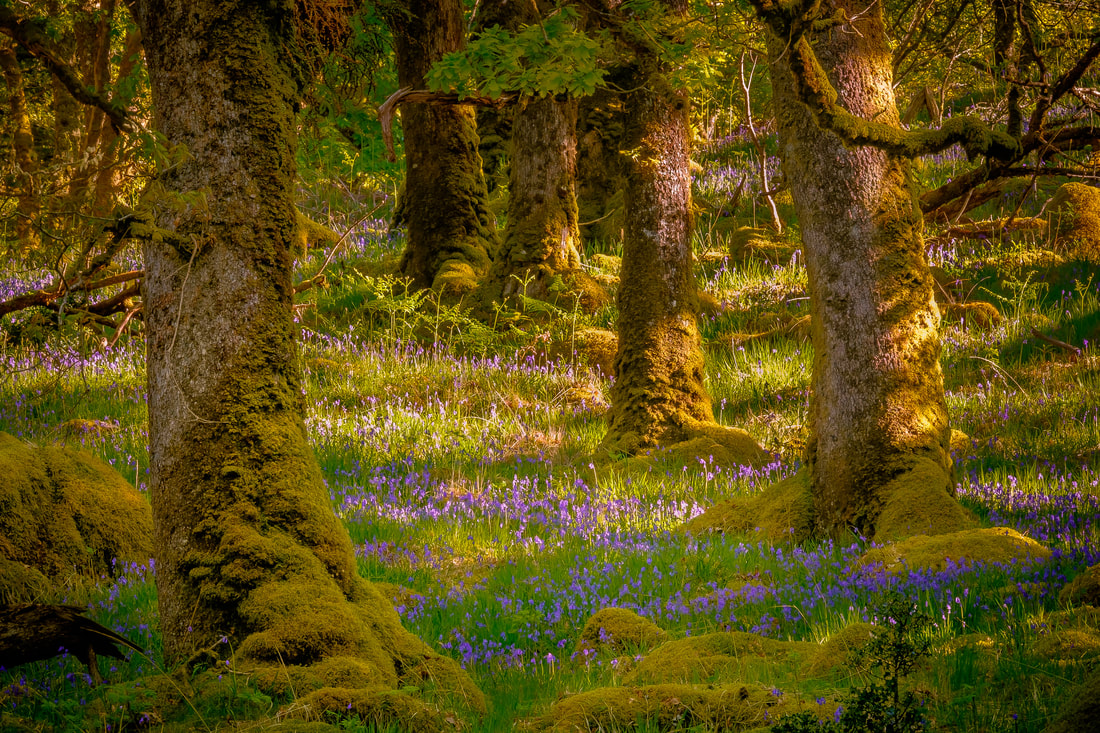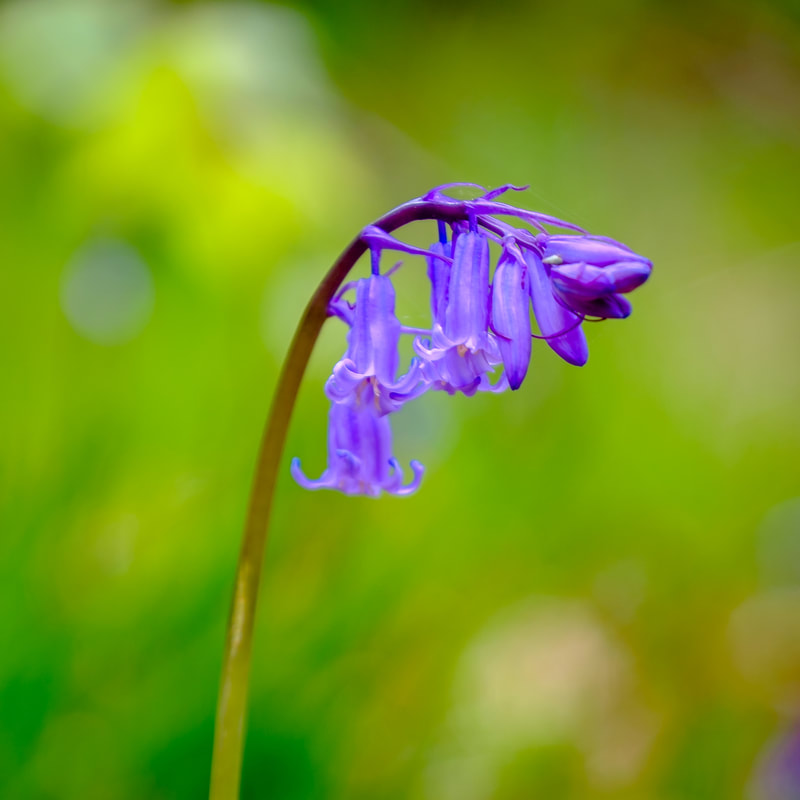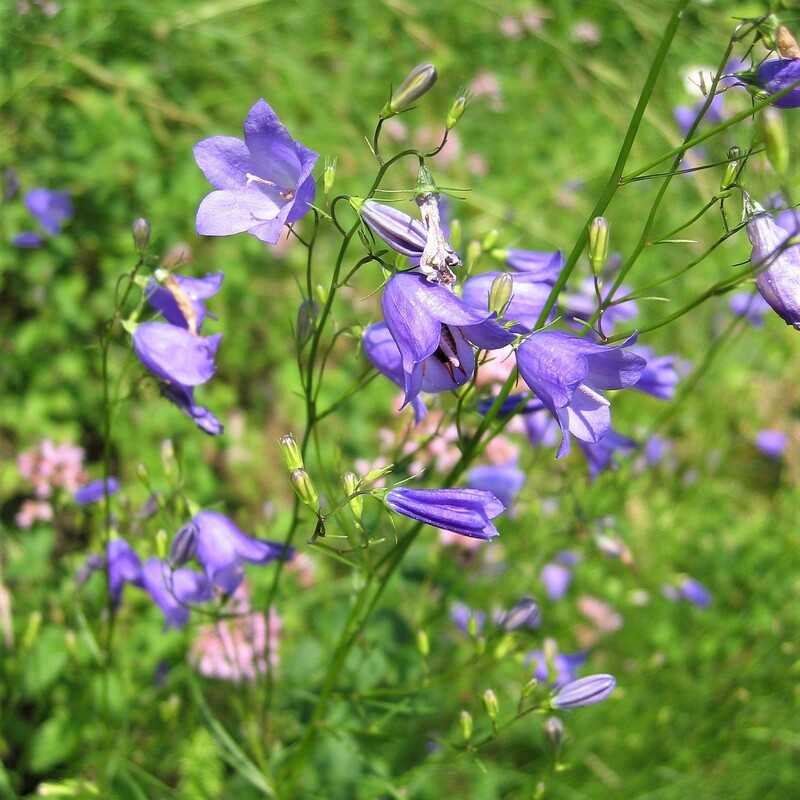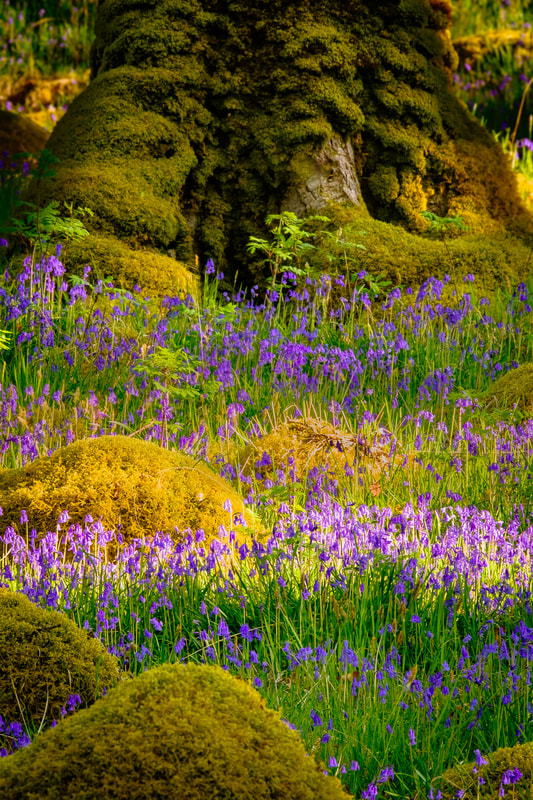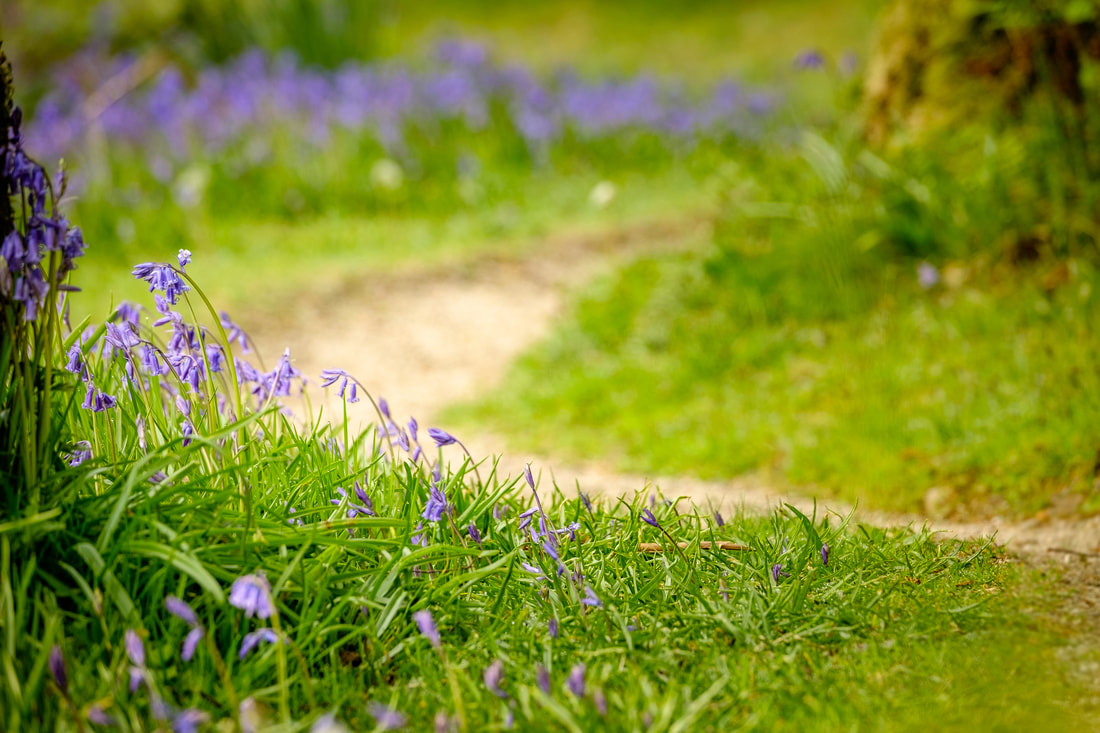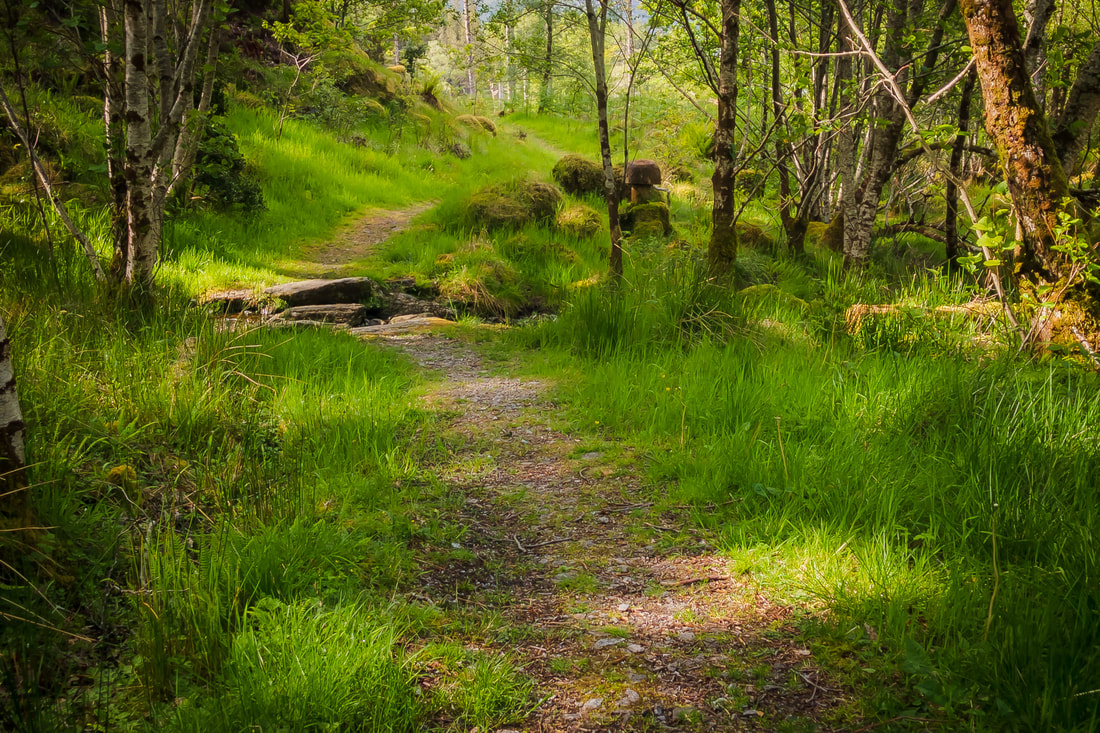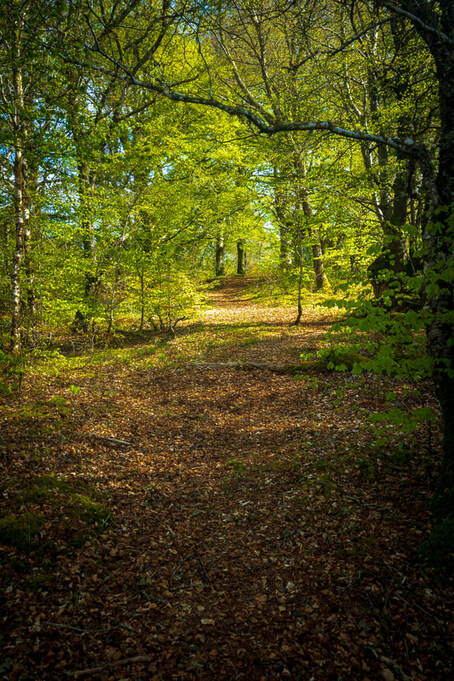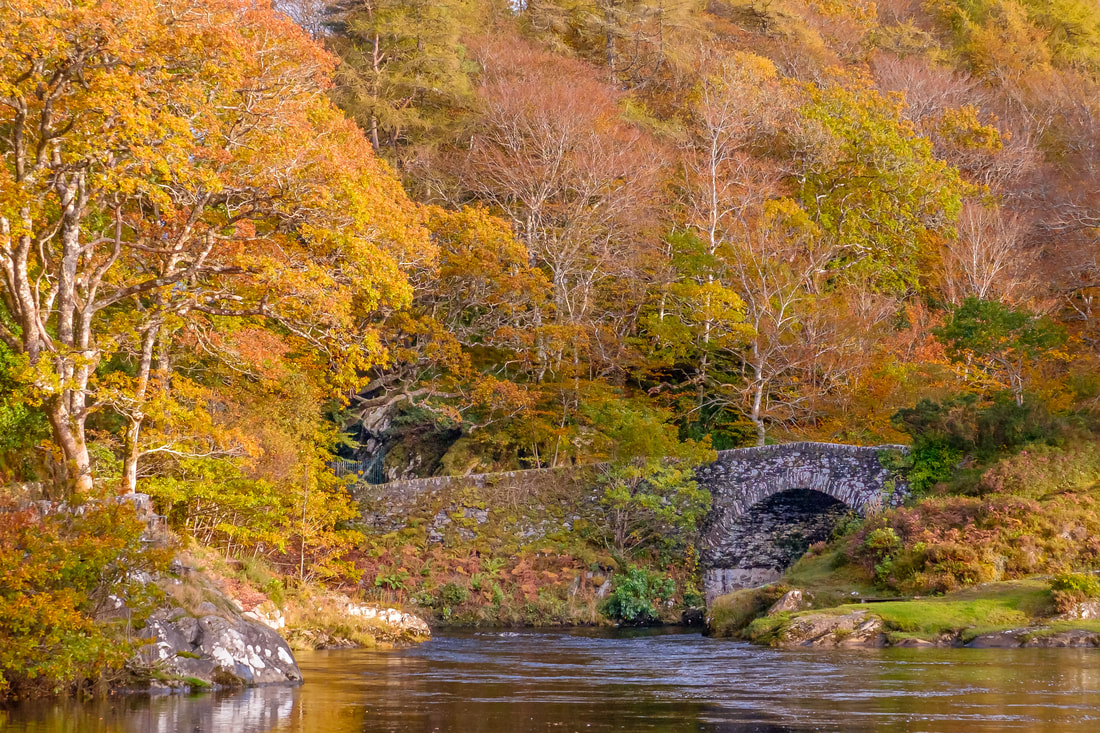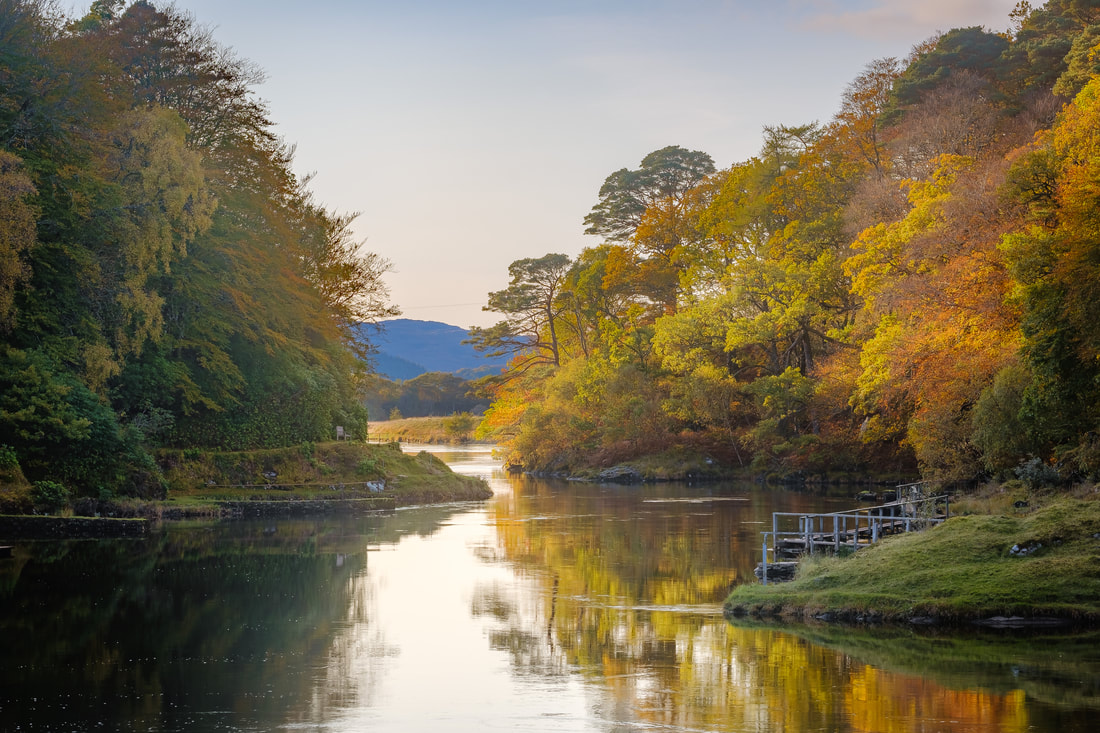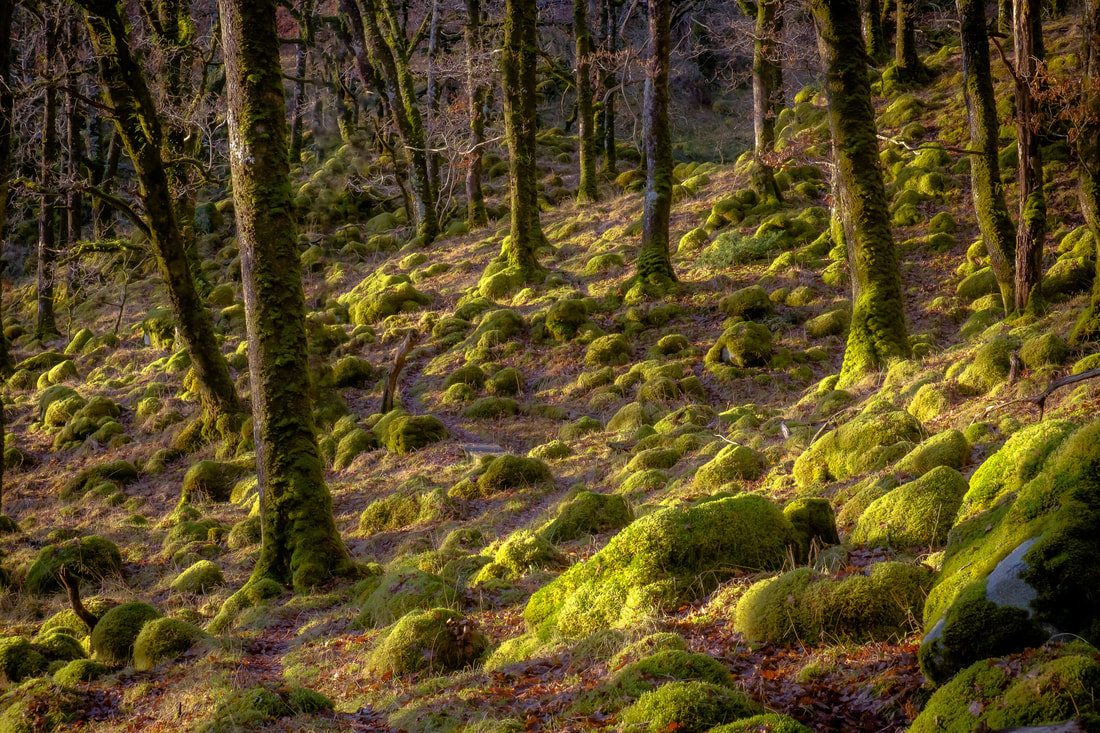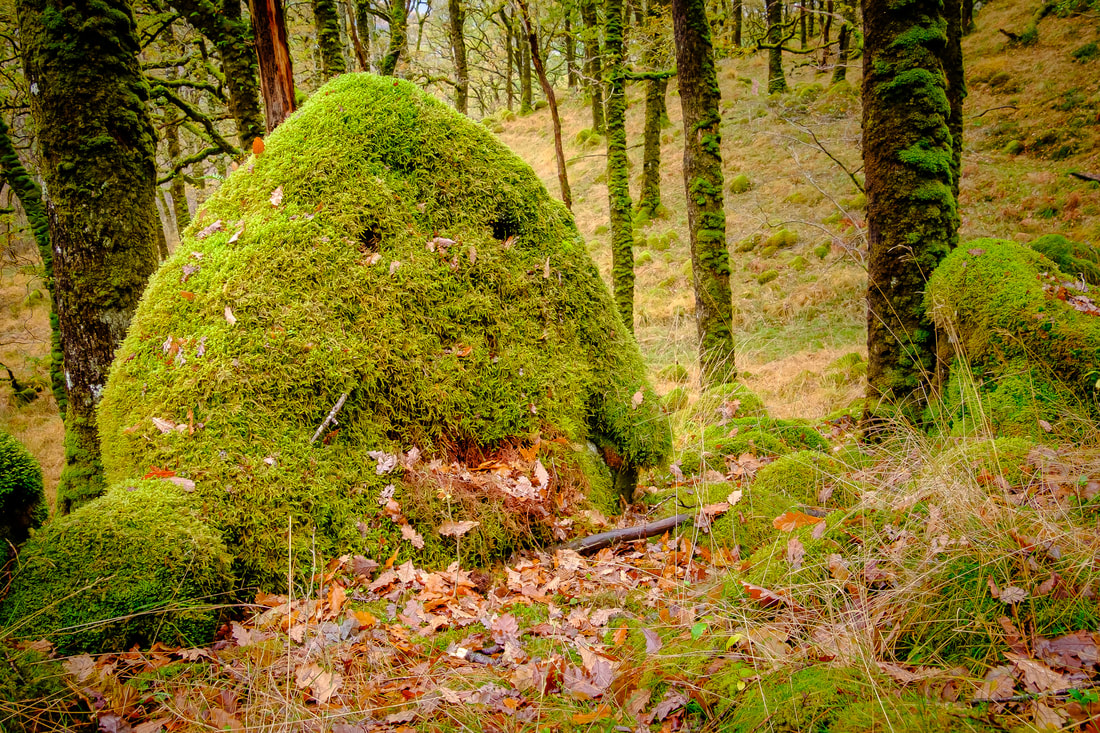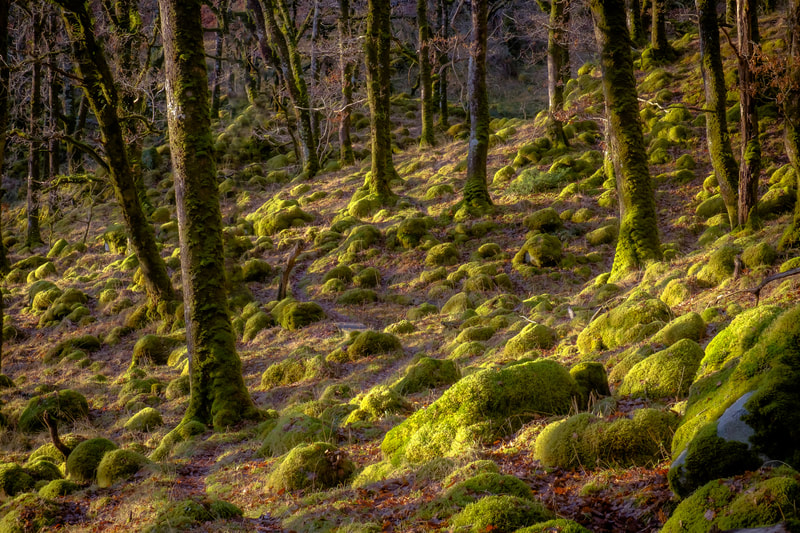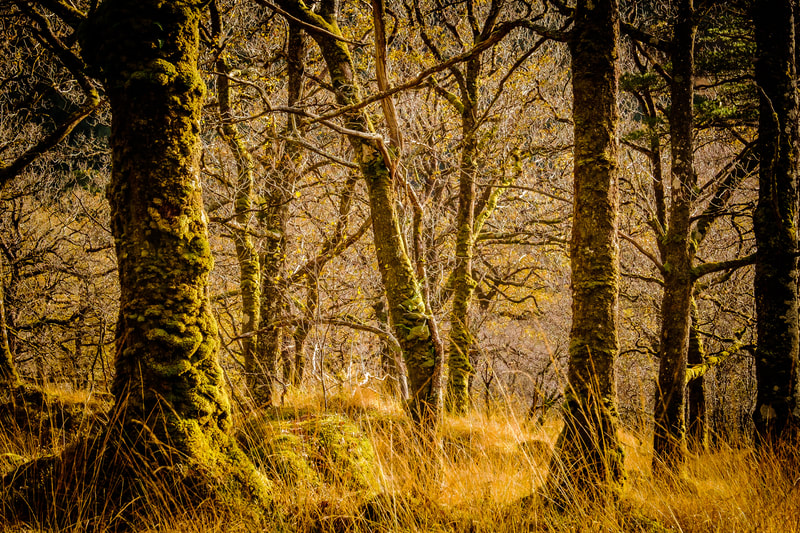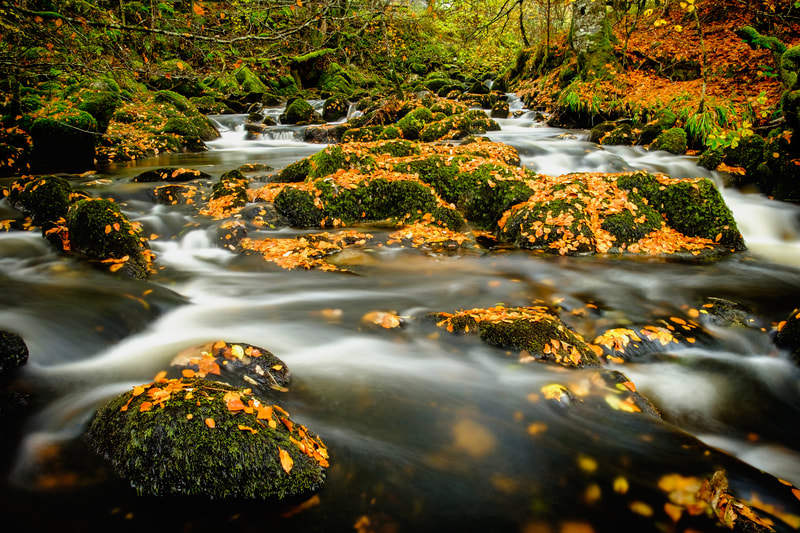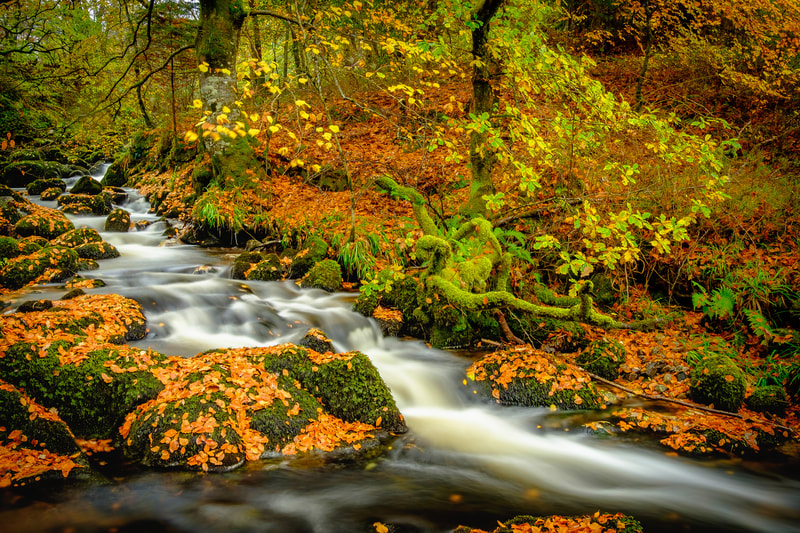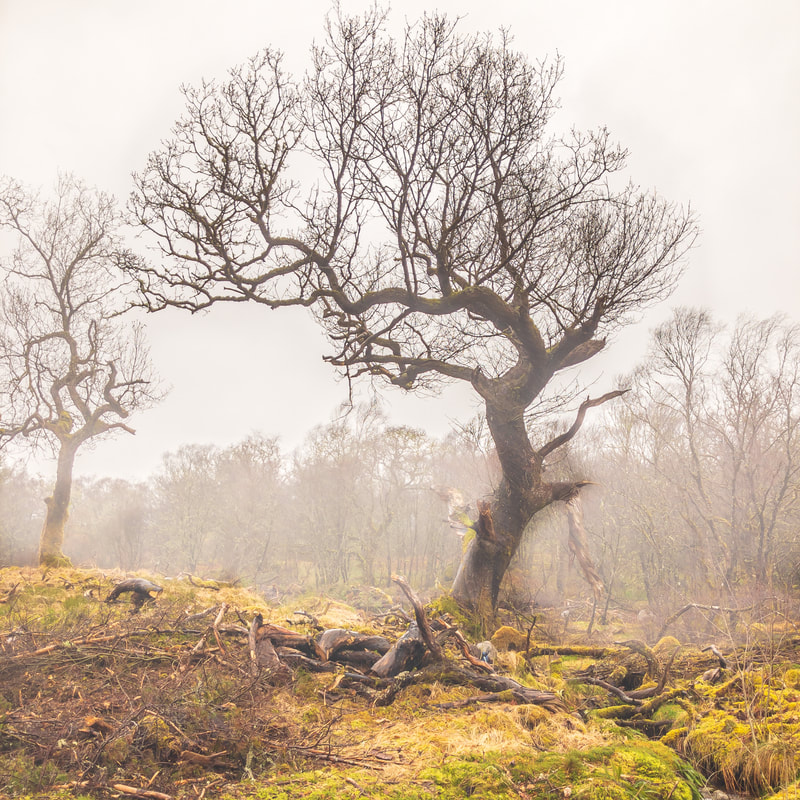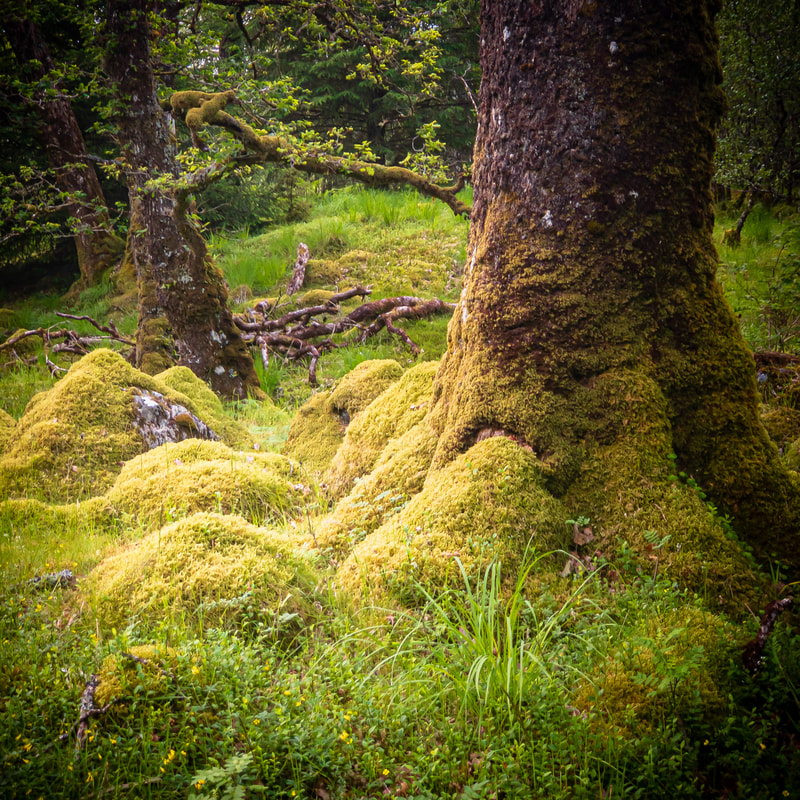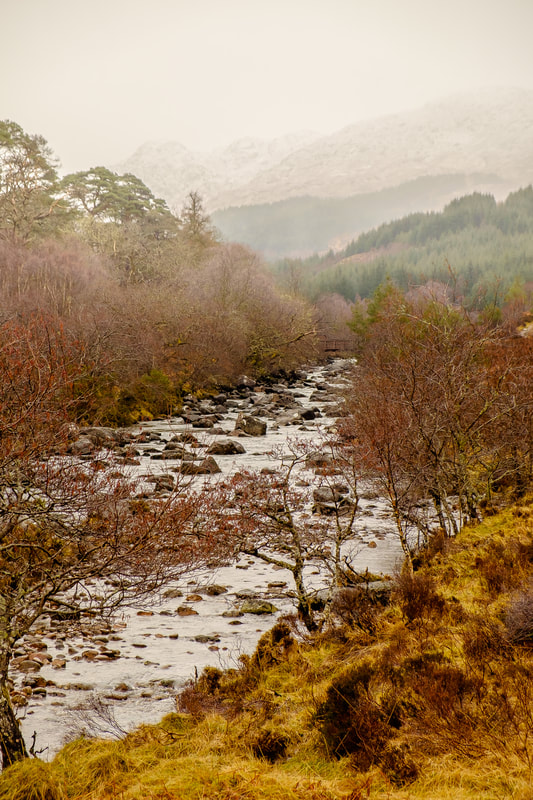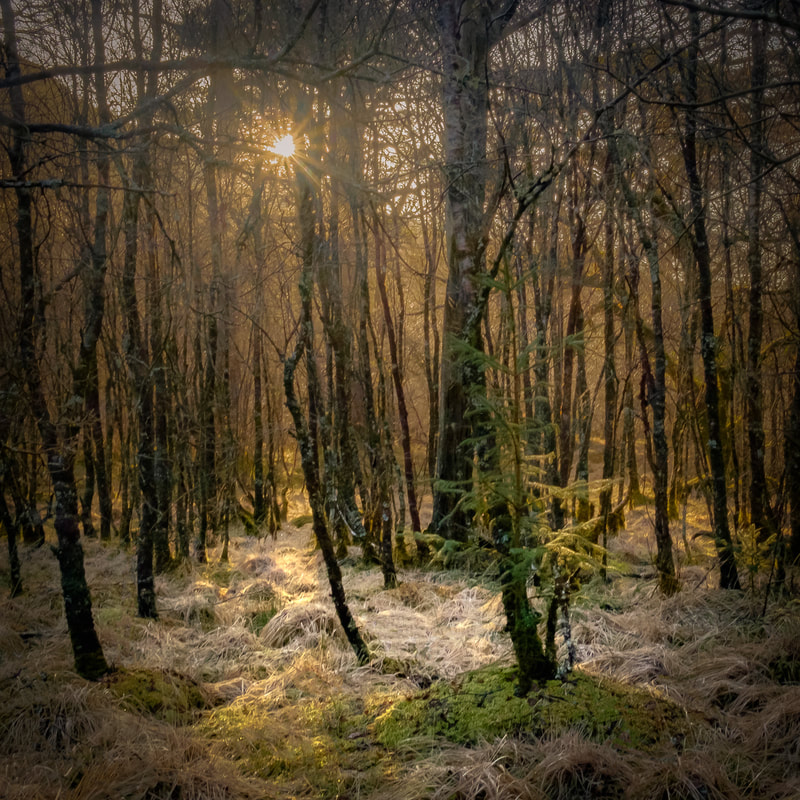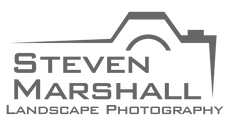|
My seventh Spring of living here on the Peninsulas has come to an end and I find myself reflecting on something that never ceases to mesmerise me during late May and early June each year. It is the sight of the delicate blue coloured, bell-shaped flowers of the bluebell creating intense blankets of colour in the woodlands, on the hillsides and along the verges throughout the length and breadth of the Peninsula. However, are these really bluebells I am seeing in this incredible wildflower spectacle, or are they something else? Well, it seems that these little plants that spend most of the year as bulbs underground in our woodlands and hillsides, are what botanists call ‘wood hyacinths’ or “Hyacinthoides con-scripta” and have been given the common name of “English Bluebell” because their flowers are indeed blue, and they are indeed shaped like a bell. What about the Scottish Bluebell though? Well, do you remember Scottish Bluebell Matches and the delicate blue and bell-shaped flowers on the matchbox? These are completely different from the “blue bells” on the plants in our woodlands. They are in fact “Campanula rotundifolia”, a creeping, rooted perennial that flowers from July to September and more commonly known as the Harebell. It favours dry, grassy places, so you will find it in the dry land around our sandy beaches as opposed to in our damp, shady woodlands. Many English Bluebell tales involve dark fairy magic with bluebell woods being portrayed as scary, forbidding places that should be avoided. For example, if you do enter a bluebell wood, you should never pick or step on a bluebell for fear of breaking a spell that a faerie has hung on one of the flowers. If you do break a faerie spell, they will get extremely upset, seek you out and enchant you in such a way that you would be drawn further into the woods to wander lost for evermore. Folklore says that you also need to be careful with the Scottish Bluebell because its common name is rooted in magic. Some say that the name “Harebell” was given to the flower because witches would turn themselves into hares and hide among them. It may also be the reason why the names Witch's Thimbles and Witch Bells were used for the flowers.
So, there you have it. Hyacinths or Harebells? English Bluebells and Scottish Bluebells? Different plants linked by a common name and a whole lot of myth and legend, both of which you should not damage for fear of being visited by angry faeries, witches or indeed, the Aul’ Man himself.
2 Comments
May is probably the month of the year that I look forward to most because it is the month in which the landscape well and truly awakens from its winter slumber. The dawn chorus fills the early morning air with birdsong, spring flowers cover the ground with a multitude of bright colours and trees burst with new leaves to create beautiful and vibrant sights in our woodlands. So, on bright May mornings while walking at Sàilean nan Cuileag near Salen and Phemie’s Walk near Strontian, I was compelled to capture the scenes shown in the images below because the fresh, bright green colour of the grass on the ground and the leaves on the trees was such a beautiful and vibrant sight. This ‘spring green’ colour is such a potent sign of new life and renewal. So much so, that it’s little wonder that Beltane, an ancient Celtic festival celebrating joy, renewal, and community falls on the first day of May. Beltane marks the beginning of summer in the Northern Hemisphere and is considered one of the four major seasonal Celtic festivals along with Samhain, Imbolc, and Lughnasadh. As well as joy and renewal, Beltane is often associated with fertility, abundance, and growth, and has been celebrated for centuries with feasting, dancing, and bonfires. In ancient times, bonfires would be lit on hilltops to honour the sun and promote fertility. The bonfire would be the centrepiece of the Beltane celebrations, symbolising the return of the sun and the warmth of summer. It was also believed to have protective and purifying powers, and people would jump over the flames or pass through them as a form of ritual cleansing and purification. They would also drive their livestock between the fires, believing that the smoke and ashes would protect them from disease and bring fertility to the animals.
I grew up in a large council estate called Burnfoot. It was built between the 1950s and 1970s and, in the early part of these years, a group of local people decided to revive the Beltane traditions and create a festival that would celebrate community and bring the people of this new housing estate together. Central to the festival was the crowning of a local girl as the Burnfoot Queen who, like the May Queens of the past, was chosen for her character and community spirit, and was considered to be a role model for other young people living on the estate.
I remember the crowning ceremony to be a big occasion. It was attended by a large crowd of locals and visitors and once it had taken place, there would be procession through the estate, with the Burnfoot Queen at its head, on an elaborately decorated float. To the small boy that I was, the parade was a colourful and lively event, featuring floats and displays from local businesses and organisations. So much so, that it would bring together people of all ages and backgrounds to celebrate what was known as the Burnfoot Festival and ultimately the community of Burnfoot. As far as I’m aware, this Festival still takes place and I find it fascinating how this event from my distant childhood memories was a revival of Beltane traditions that can be traced back to pre-Christian times in Scotland. We are now in well in to October, the second month of meteorological autumn. It is when the number of visitors to the Peninsula reduces, the days become shorter, the nights become cooler, and the sun gets lower in the sky. This brings a quietness to the area and a quality of light that cannot be found at any other time of the year which, when combined with the autumn colours, makes what is a photographer’s paradise even more perfect than it already was. By the middle of the month most of the numerous wooded areas around the Peninsula are normally at or near their “autumn peak”, having swapped canopies of green for tapestries of vibrant reds, golds and ambers. The image above was taken around this time in 2019, which was a particularly good year for the autumn colours, and it shows the trees around the Old Shiel Bridge at Blain in their full autumn splendour. The Old Bridge was built by Thomas Telford in 1804. It spans a narrow chasm through which the waters of the River Shiel pass and seem to come to the boil before they expand in the House Pool, slow down and then run both still and deep. This single span bridge provides an interesting subject that can be photographed from many different angles. This, combined with how the smooth waters of the House Pool and the river downstream of it reflect the autumn colours, make it the perfect place to capture the splendour of the trees at this time of the year. I’ve visited the bridge a few times over the last week or so to find that the arrival of the autumn colours is not quite as advanced as it normally is. Indeed, I can’t help feeling it is a week or two behind and although there are now hints of golds in the landscape, I find my myself wondering if their late arrival means that there will be a poorer show this year.
So, what makes for a good show of autumn colours? Well, the answer lies in the fact that leaf colour comes from pigments, which are natural substances produced by the leaf cells to help them obtain food. There are three pigments: chlorophyll (green), carotenes (yellow) and anthocyanins (reds and pinks). It is the mix of them, as influenced by the weather, that determines depth of colour we get each year:
In addition to this, a warm dry 'Indian summer' is needed so that the leaves work for longer and therefore stay full of these pigments until the reducing hours of daylight and lower night temperatures trigger the colour change. So, if we’re to have another great show of autumn colours this year, let’s hope for some settled weather over the next couple of weeks, followed by some cold nights and dry, bright sunny days. I took the following photograph on a late winter afternoon as light fell on some of the hundreds of moss-covered boulders that lie amongst the trees in Ariundle Oakwood near Strontian and couldn’t help being reminded of the faerie mounds where the sídhe are said to live. Read on to find out more about these mythological creatures…. What’s in a Name? If you take a walk through Ariundle Oakwood, you’ll see a woodland floor covered with hundreds of moss-covered boulders which, with a little bit of imagination, could be mistaken for mounds that are home to the mythological sídhe, a supernatural race comparable to the faeries or elves. Indeed, the nearby village of Strontian got its name because of the faeries. In Scottish Gaelic, it is called Sròn an t-Sìthein, which translates as the ‘nose of the fairy hill’ and means a knoll or low round hill inhabited by the sídhe.
Going back to Strontian, or Sròn an t-Sìthein, the term sìthein (pronounced shee-an) often referred to small conical hills with hollow interiors containing an invisible world within which it was believed that faeries coexisted with the world of humans. They were thought to have had a huge influence on how successful the annual harvest would be and if a crop failed it was sometimes thought that someone had violated or upset them. So, before you decide to go walking in the fields or forests by yourself, it is perhaps best if you know a little bit about the various faeries, their significance and how not to upset them. Respect, Honesty and No Green Most important of all is to never let a faerie overhear you calling them faeries as they do not like this. They prefer to be called ‘fair folk’ and are very sensitive creatures, so do not be rude, or you might suffer the consequences. Also, you should always be honest with a faerie as they will know if you have lied to them, and not surprisingly, they don’t take kindly to that either. Finally, wearing the colour ‘green’, is also not advisable, as faeries see this as a colour that belongs to them. There are many different kinds of fairies. Some take on human form, some take the form of creatures, some can fly, and all can appear and disappear at will. Some will fool you with comical antics, some will lure you with beauty and some will just plainly let you know how they feel about a human intrusion. Coming across ‘fair folk’ like Buachailleen, Brownies, Gnomes, the Gruagach, Heather Pixies, Pixies and Seelie Courts can be a very rewarding and magical experience, as most of these faeries enjoy being mischievous, shy and friendly. The same cannot be said for the Ghillie Dhu, Kelpies, Nucklelavees or Fachans. Most of these faeries dislike humans intensely and an encounter with one of them folk could end badly for you. In particular, make sure you avoid the Black Angus or Cù-sìth, which means "faery dog". If this large black dog with yellow eyes and sharp fangs shows itself to you, the legend says that you will die in a fortnight. Belief in the ‘fair folk’ continues to this day, with stories being told in the early twentieth century of unwary humans being lured inside the sìthein at night, only to emerge the following morning and discover that decades had passed in the outside world. Other tales detail the abduction of unbaptised babies, or doomed romances with the fairy folk, and the various ills which befell those who dared to refuse them hospitality. Even as recently as January this year (2020), plans for a fish farm in Loch Pooltiel off the north-west coast of Skye were rejected after campaigners warned that fishermen could be lured to their deaths by Ashrays. Also known as Asrais, these faeries are completely translucent water creatures and are often mistaken for sea ghosts. A group of campaigners called Friends of the Eilean Fhlodaigearraidh Faeries warned that workers' lives could be put at risk by the creatures, who could 'lure them with promises of gold and jewels into the deepest part of the ocean'. It’s not all bad though, because as long as you respect the faeries and stick to the rules how not to upset them, then you should be safe on your walk through the oakwoods. Remember to call them ‘fair folk’, do not be rude or dishonest and finally, don’t wear green. Images of SunartYou will find other images of Ariundle Oakwood and the wider area of Sunart in the Images of Sunart gallery on this website. If you’d like a print of any one of them, please feel free to get in touch. Also get in touch if you’d like to arrange some photography tuition.
|
AuthorHi, Archives
March 2024
Categories
All
|

